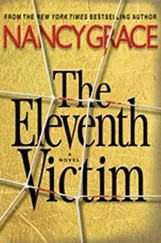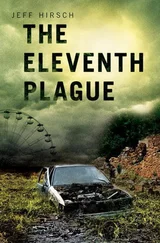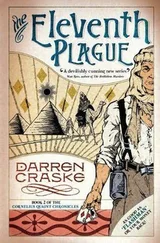Anthony Summers - The Eleventh Day
Здесь есть возможность читать онлайн «Anthony Summers - The Eleventh Day» весь текст электронной книги совершенно бесплатно (целиком полную версию без сокращений). В некоторых случаях можно слушать аудио, скачать через торрент в формате fb2 и присутствует краткое содержание. Жанр: Старинная литература, на английском языке. Описание произведения, (предисловие) а так же отзывы посетителей доступны на портале библиотеки ЛибКат.
- Название:The Eleventh Day
- Автор:
- Жанр:
- Год:неизвестен
- ISBN:нет данных
- Рейтинг книги:3 / 5. Голосов: 1
-
Избранное:Добавить в избранное
- Отзывы:
-
Ваша оценка:
- 60
- 1
- 2
- 3
- 4
- 5
The Eleventh Day: краткое содержание, описание и аннотация
Предлагаем к чтению аннотацию, описание, краткое содержание или предисловие (зависит от того, что написал сам автор книги «The Eleventh Day»). Если вы не нашли необходимую информацию о книге — напишите в комментариях, мы постараемся отыскать её.
The Eleventh Day — читать онлайн бесплатно полную книгу (весь текст) целиком
Ниже представлен текст книги, разбитый по страницам. Система сохранения места последней прочитанной страницы, позволяет с удобством читать онлайн бесплатно книгу «The Eleventh Day», без необходимости каждый раз заново искать на чём Вы остановились. Поставьте закладку, и сможете в любой момент перейти на страницу, на которой закончили чтение.
Интервал:
Закладка:
Yousef had told him the previous year, in Pakistan, of wanting “to blow up unnamed American airliners by placing explosives aboard the aircraft.” Training sessions followed, with Murad making notes of formulas and instructions. Then, in December, Yousef had summoned him to the Philippines. They worked on methods of disguise—removal of the obligatory jihadi beard, L’Oréal dye to color the hair, and blue contact lenses—to look “more European.”
They bought Casio watches for use as timing devices to trigger the airliner bombs. Yousef ran live experiments, the first time with a small device planted under a seat in a local movie theater. It worked perfectly, without causing serious injury—because the seat was unoccupied at the time. The second test, however, proved lethal.
In early December, posing as an Italian, Yousef boarded a Philippine Air flight bound for Tokyo with 273 passengers. He had with him one of the modified Casio watches, liquid explosive in a contact lens solution bottle, and minute batteries hidden in the heels of his shoes. He assembled the device in flight, concealed it under the seat cushion of Seat 26K, then left the plane at a scheduled stopover.
Two hours later, the bomb went off in mid-flight. Though it killed the unfortunate passenger in 26K and crippled the aircraft’s controls, the plane landed safely thanks to the skill of its pilots. The operation had proved to Yousef, however, that his devices could work. He now prepared another bomb, intended for an American airplane.
Murad was to plant the bomb this time. He would avoid suspicion by using two carry-on bags, one to smuggle the liquid on board, the second for components. The detonator was to be concealed inside a Parker pen, the bomb placed in a restroom near the cockpit. Murad would escape by leaving the plane at a stopover, as had Yousef previously. The pair expected to “cause the destruction of the plane and the death of everyone on board.”
A date had been picked, a flight chosen—United Airlines Flight 2 from Hong Kong to Los Angeles on January 14. Then on January 6, the plan fell apart—with the telltale smoke emanating from the conspirators’ apartment, the police search that followed, and Murad’s arrest. It was to retrieve Yousef’s laptop computer that Murad had risked trying to return to the apartment. Now the police had it.
A file on the laptop revealed that the plot called for the bombing of not only United Flight 2 but of eleven other American airliners. A number of terrorists, identified on the laptop by pseudonyms, were to transport and plant the devices. Flights targeted included seven operated by United, three by Northwest, and one by Delta. Under the headings “TIMER” and “SETTING,” Yousef had meticulously listed at precisely what time one of his Casio watches was to detonate each individual bomb.
The airlines were alerted, flights diverted and grounded, on orders direct from the Clinton White House. In the sort of security scare not to be seen again until after the Millennium, passengers in the Pacific region were searched, all liquids confiscated, for weeks to come.
Catastrophe had been averted thanks only to Inspector Fariscal’s insistence on entering the apartment that served as Yousef’s bomb factory. Had the plot succeeded, as many as four thousand people could have died—more than the total that were to be lost on 9/11.
The computer file on the plot bore a code name that at first meant nothing to investigators—“BOJINKA.” It appears to be a Serbo-Croatian or Croatian word meaning “loud bang,” “big bang”—or just “boom.” “Boom,” the word Yousef had used two and a half years earlier, in plain English, as verbal code for his coming attack on New York’s World Trade Center.
Exactly a month after the discoveries in Manila, the bomber was finally betrayed and arrested in Pakistan. Extradited to the United States, thanks to a cooperative Prime Minister Bhutto, he faced trial twice—once for the airliner plot, once for the 1993 Trade Center bombing. Found guilty in both cases, Yousef was sentenced to a theoretical 240 years in jail.
“I am a terrorist and I’m proud of it,” he had declared in court. “I support terrorism so long as it is against the United States government and against Israel.” In 1995, on the final stage of his return from Pakistan, a helicopter was used to bring Yousef, shackled and blindfolded, to the Correctional Center in Lower Manhattan. As the helicopter approached the Twin Towers, an FBI agent pulled up the blindfold and pointed. “See,” he said. “You didn’t get them after all.” The prisoner responded with a look and a curt “Not yet.”
When the towers were finally destroyed, on 9/11, Yousef would prostrate himself in his prison cell and give praise to Allah. He had all along accepted responsibility for the 1993 bombing, but on one point he remained evasive. Was he or was he not the mastermind behind the operation? He would say only that Muslim leaders had inspired his work. Which Muslim leaders? He would not say.
AS LATE AS 2004, a former CIA deputy director of intelligence—by then a senior staff member of the 9/11 Commission—would say there was “substantial uncertainty” as to whether Osama bin Laden and his organization had a role in either the Trade Center bombing or the plot to blow up U.S. airliners over the Pacific.
Available information suggests there was in fact a link to bin Laden. Yousef had learned about explosives in bin Laden–funded camps near the Afghan border. In 1991, when he reached the Philippines, he told separatists he was bin Laden’s “emissary.” The separatist with whom he had most contact was funded by bin Laden, had been close to bin Laden during the anti-Soviet conflict. The accomplice who tried to enter the United States with Yousef—but was refused admission—had carried a bomb manual headed “Al Qaeda,” the name for the then-obscure entity headed by bin Laden.
Yousef made a huge number of long-distance calls while preparing to bomb the Trade Center. Checks on the calls after the attack reportedly indicated a link to bin Laden. During Yousef’s stays in Peshawar, over several years, he stayed at the Beit Ashuhada [House of the Martyrs], which bin Laden funded. One of the operatives Yousef used in the Philippines was an Afghanistan veteran whom bin Laden has recalled as a “good friend,” a man who had “fought from the same trenches” with him.
Bin Laden also connected to the Yousef operation through his own brother-in-law. This was his Saudi friend from university days, Jamal Khalifa, who married bin Laden’s sister Shaikha and lived with bin Laden after the wedding. “Imagine how close we are,” Khalifa would say after 9/11. “We never disagreed about anything.”
By the early 1990s, Khalifa had long been active in the Philippines, fronting as a “missionary” or “philanthropist” and setting up charities to support Muslim causes. In 1992, according to an intelligence report, bin Laden himself visited the Philippines to bestow financial largesse.
Behind the facade, Khalifa spread money around in support of antigovernment rebels. By one report, moreover, he and bin Laden personally introduced one leading Filipino rebel leader to explosives expert Ramzi Yousef. Khalifa remained active in the Philippines until late 1994. Then he abruptly left the country, on the heels of a police report on Muslim groups and terrorism.
Just before Christmas that year, on the U.S. West Coast, Khalifa was arrested by FBI agents—at the very time that, back in the Philippines, Yousef was finalizing his plan to bomb eleven American airliners. In the Saudi’s baggage, agents found: a phone book listing a number in Pakistan that Yousef had called from Manila; a beeper number for one of the accomplices Yousef planned to use to plant his bombs on American planes; the address of Yousef’s bomb factory; documents related to explosives and weaponry—and a phone directory entry for Osama bin Laden.
Читать дальшеИнтервал:
Закладка:
Похожие книги на «The Eleventh Day»
Представляем Вашему вниманию похожие книги на «The Eleventh Day» списком для выбора. Мы отобрали схожую по названию и смыслу литературу в надежде предоставить читателям больше вариантов отыскать новые, интересные, ещё непрочитанные произведения.
Обсуждение, отзывы о книге «The Eleventh Day» и просто собственные мнения читателей. Оставьте ваши комментарии, напишите, что Вы думаете о произведении, его смысле или главных героях. Укажите что конкретно понравилось, а что нет, и почему Вы так считаете.











